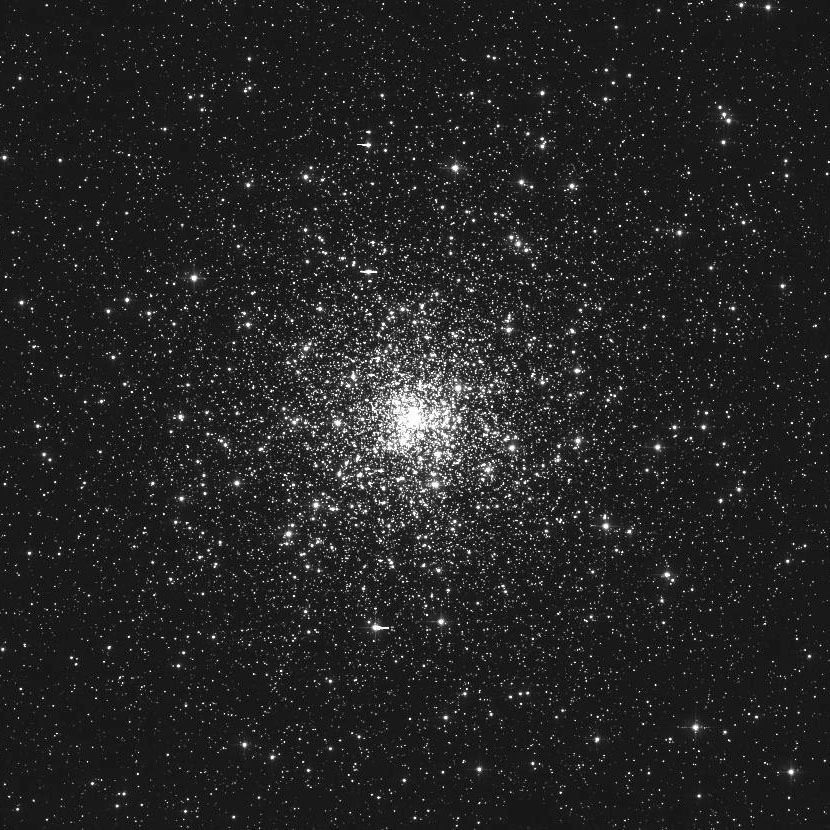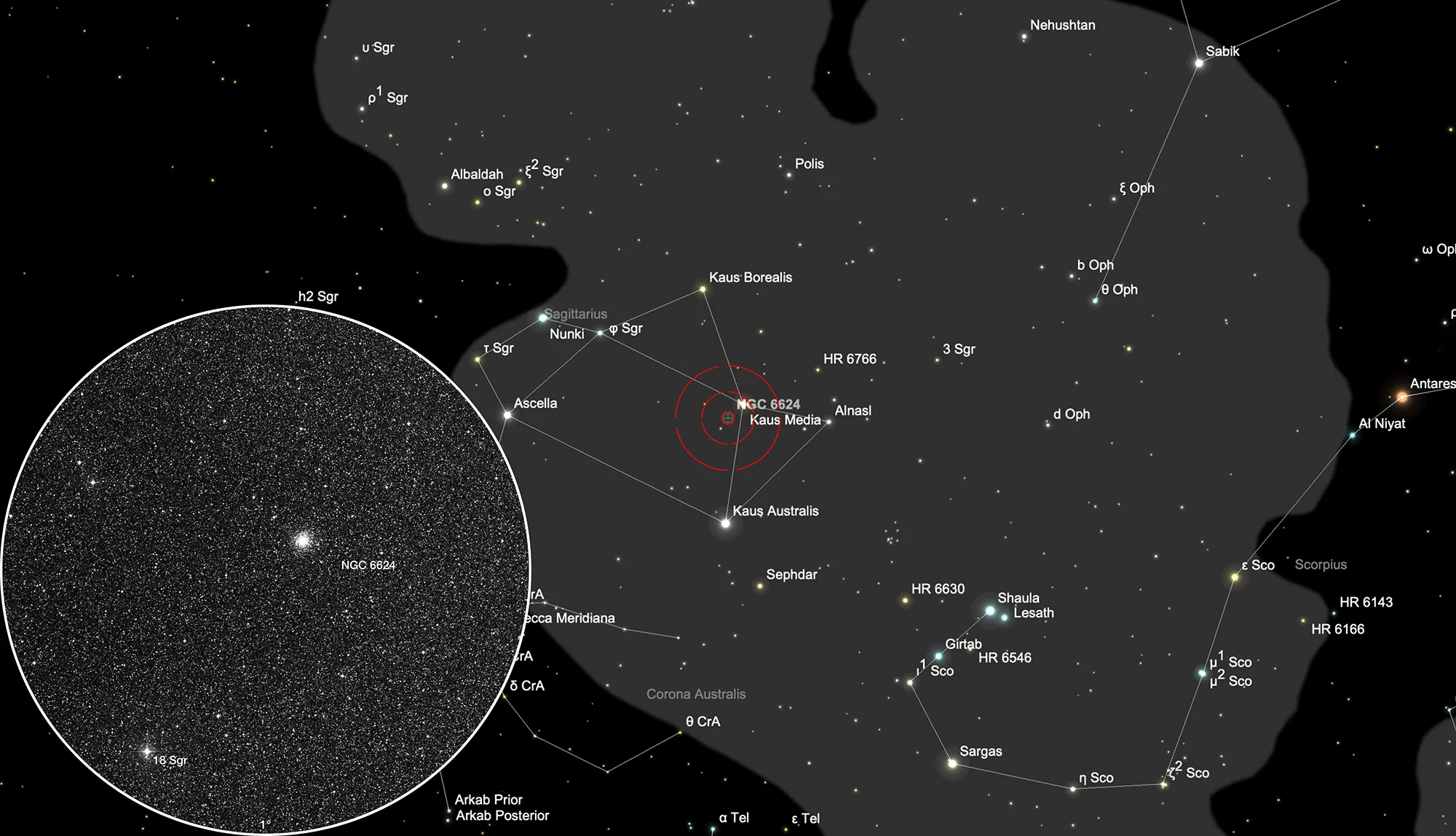Globular Cluster NGC 6624

History
This globular cluster was discovered by William Herschel on 24 June 1784 using his 18.7 inch reflector. He could not resolve the cluster and cataloged it with I 50 as a bright nebula with the notes: «Considerably large, round, very brighter in the middle, milky.» [463] John Herschel identified the object as a globular cluster in 1832, but could barely resolve it with his 20 feet telescope with 18.3 inch aperture in Slough. [466] Later in 1835 from Feldhausen on the Cape of Good Hope he could clearly resolve the globular cluster into stars and named it «a fine object». [11]
Physical Properties
NGC 6624 is a globular cluster located in the bulge close to the galactic centre. Its distance from the Sun is 8.0 ± 0.1 kpc and from the galactic centre is 1.2 kpc. The cluster shows a cusp in the stellar distribution of the central regions which is typical for systems that have undergone a core collapse.
This globular cluster hosts many known pulsars, some of which are millisecond pulsars that have a short characteristic age. This is contrary to the usual scenario of pulsar formation. Globular clusters usually host very old stars and show no signs of star formation, so no massive stars were around to form these pulsars. These pulsars are thought to be old neutron stars that encountered other stars in this dense cluster and started moving by accreting matter from their new companions. [606]
| Designation | NGC 6624 |
| Type | GCL (VI) |
| Right Ascension (J2000.0) | 18h 23m 40.5s |
| Declination (J2000.0) | -30° 21' 38" |
| Diameter | 8.8 arcmin |
| Visual magnitude | 7.6 mag |
| Metric Distance | 7.900 kpc |
| Dreyer Description | globular, vB, pL, R, rrr, st 16 |
| Identification, Remarks | WH I 50; h 3742; GC 4404; GCL 93; ESO 457-SC11 |
Finder Chart
The globular cluster is located in the Teapot of the constellation Sagittarius and the best time for observing is from February to December.
